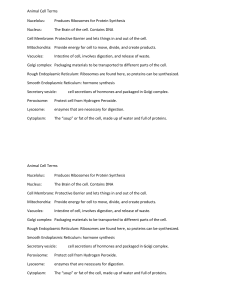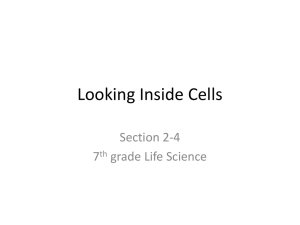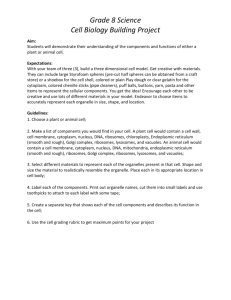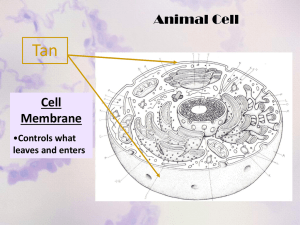NEW Topic 3 the voice of the genome Objectives
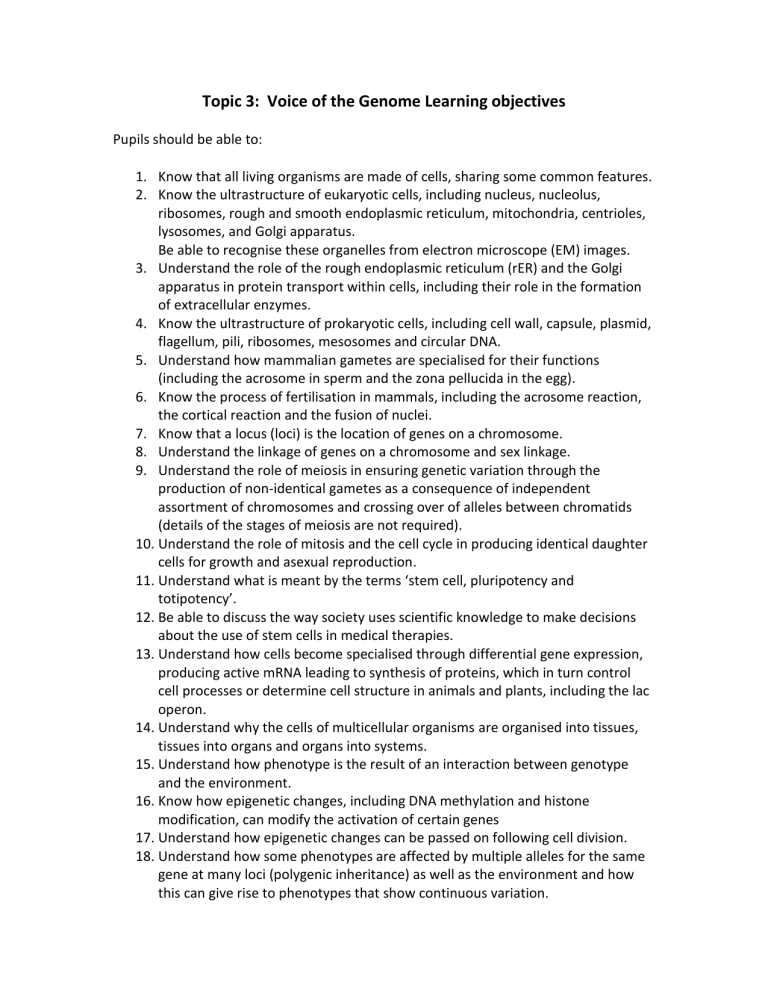
Topic 3: Voice of the Genome Learning objectives
Pupils should be able to:
1.
Know that all living organisms are made of cells, sharing some common features.
2.
Know the ultrastructure of eukaryotic cells, including nucleus, nucleolus, ribosomes, rough and smooth endoplasmic reticulum, mitochondria, centrioles, lysosomes, and Golgi apparatus.
Be able to recognise these organelles from electron microscope (EM) images.
3.
Understand the role of the rough endoplasmic reticulum (rER) and the Golgi apparatus in protein transport within cells, including their role in the formation of extracellular enzymes.
4.
Know the ultrastructure of prokaryotic cells, including cell wall, capsule, plasmid, flagellum, pili, ribosomes, mesosomes and circular DNA.
5.
Understand how mammalian gametes are specialised for their functions
(including the acrosome in sperm and the zona pellucida in the egg).
6.
Know the process of fertilisation in mammals, including the acrosome reaction, the cortical reaction and the fusion of nuclei.
7.
Know that a locus (loci) is the location of genes on a chromosome.
8.
Understand the linkage of genes on a chromosome and sex linkage.
9.
Understand the role of meiosis in ensuring genetic variation through the production of non-identical gametes as a consequence of independent assortment of chromosomes and crossing over of alleles between chromatids
(details of the stages of meiosis are not required).
10.
Understand the role of mitosis and the cell cycle in producing identical daughter cells for growth and asexual reproduction.
11.
Understand what is meant by the terms ‘stem cell, pluripotency and totipotency’.
12.
Be able to discuss the way society uses scientific knowledge to make decisions about the use of stem cells in medical therapies.
13.
Understand how cells become specialised through differential gene expression, producing active mRNA leading to synthesis of proteins, which in turn control cell processes or determine cell structure in animals and plants, including the lac operon.
14.
Understand why the cells of multicellular organisms are organised into tissues, tissues into organs and organs into systems.
15.
Understand how phenotype is the result of an interaction between genotype and the environment.
16.
Know how epigenetic changes, including DNA methylation and histone modification, can modify the activation of certain genes
17.
Understand how epigenetic changes can be passed on following cell division.
18.
Understand how some phenotypes are affected by multiple alleles for the same gene at many loci (polygenic inheritance) as well as the environment and how this can give rise to phenotypes that show continuous variation.
CORE PRACTICAL 5:
Understand how to prepare and stain a root tip squash to observe the stages of mitosis.

